
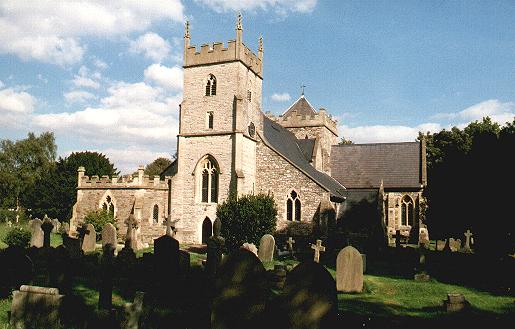
Now well inside the City of Bristol's boundaries, the parish church of Horfield is one of great antiquity, although from its largely Victorian appearance it is easy to miss some of these interesting features. It stands still in a rural setting, among the lawns and trees of Horfield Common, close to the crossroads of Wellington Hill and Kellaway Avenue. It is unusual in that it has not only a western tower but also a central lantern tower.
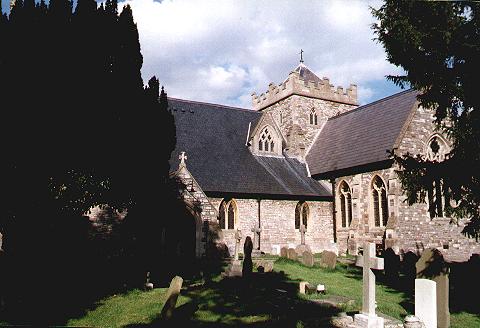
The oldest part is the churchyard itself, circular, a feature that suggests a pre-Conquest date, if not a pagan site of worship. The exterior is picturesque, cruciform, with dormer windows to light the nave and small two light windows either side of the roof pitch on the central tower. The churchyard is peaceful and it is hard to believe you are in the city, and that one of Bristol's two football stadiums is less than a quarter of a mile away. Indeed the vicar is chaplain to Bristol Rovers!
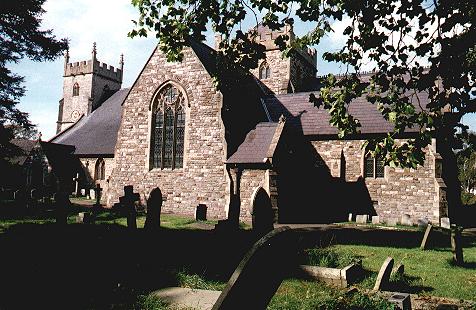
From the south, the west tower is somewhat dwarfed by the later additions. Structurally this is the only surviving piece of the medieval church, is Perpendicular in style and dates from the fifteenth century. The rest of the church dates from Victorian times, rebuilt in 1847 probably to the designs of William Butterfield, who also built the Horfield Barracks chapel beyond the Common to the east of the parish church. The church was further enlarged in 1893 when the crossing tower was built. The south transept and chapel were enlarged in 1913 to the designs of W.V.& A.R. Gough, and the north transept extended too in 1929 by P.Hartland Thomas.
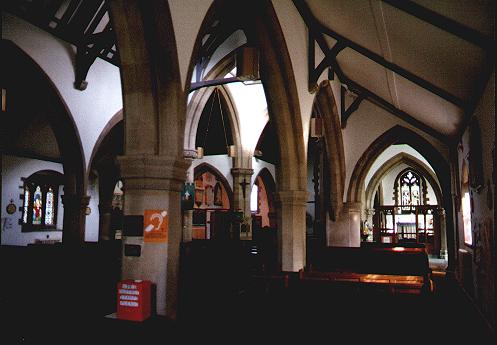
This picture above shows the view from the principle entrance (via the south porch). The various rooflines and levels make an interesting composition. In the centre distance, in the north chapel, are gathered several wall memorials some of which predate the present church.
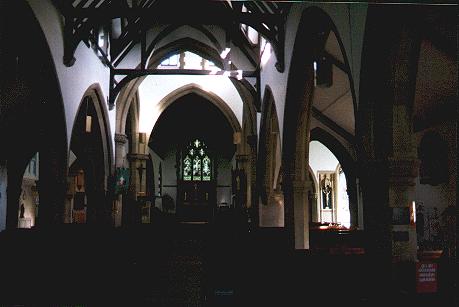
The main view to the high altar shows the reasons why the church received dormer windows in c1875 and the extra lighting which comes from the central lantern tower. In contrast the nave is somewhat dark and dingy. If any of the features are medieval , then they have been reworked as to appear all nineteenth century work. For many years the church had a wooden screen across the east crossing arch but this has now been removed.
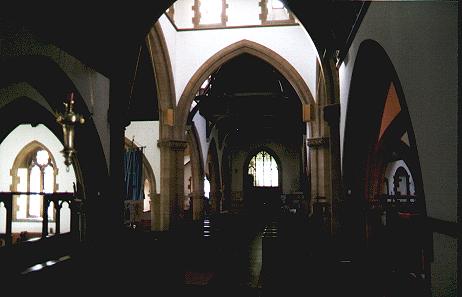
This view shows the nave from the high altar, looking back towards the medieval tower arch, which now has a wooden screen and is glazed above separating the ringing chamber from the nave.
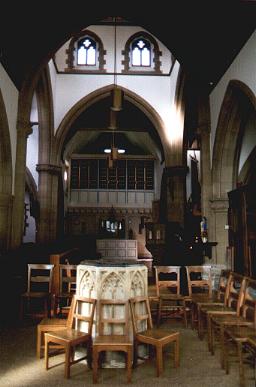
The font stands in the south transept. It is of stone, in a fouteenth century decorated style, octagonal with two-light blank tracery. I could find no mention of its history, but it looks like it too may be medieval.
The church is usually open during the day, which makes a nice change in a city where locking is the rule.